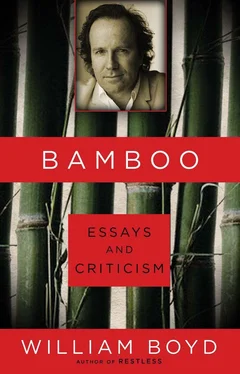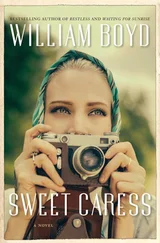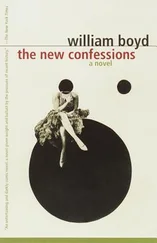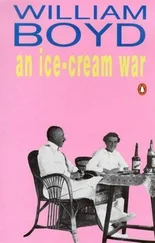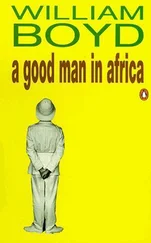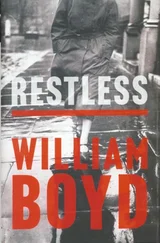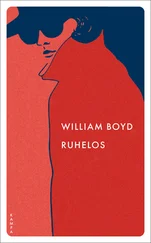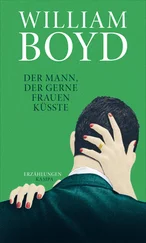It is not, however, a mere matter of busy line versus tranquil vacancy. With the move from the monochrome world of the print Sutherland’s palette multiplied dramatically, with the result that there are few better colourists in twentieth-century painting, it seems to me. Sutherland could exploit the exquisite harmonies of greens — from apple to moss to bottle — with the same exhilarating subtlety as Braque handled his browns, greys and blues. But his range was never sombre or confined to tastefully complementing shades, and he never allowed the slubby, rainsodden tones of the British landscape to dominate. Sutherland could look at a Welsh estuary on a dull, drizzling day through the refulgent, sunfilled eyes of a Fauve or a Gauguin. True, his pictures took on a more evident mineral brilliance once he was exposed to the glare of the Mediterranean light, but his work was always boldly hued. Terracotta skies, corn-yellow clouds and magenta fields were part of his pictorial world from the thirties onwards, and it was his temerity in this area that perhaps most influenced his contemporaries and is another justification of claims for his eminence. Sutherland produced great paintings from humdrum, readily available material. Fields, trees, rocks, plants, animals. It is not through any heaped-on numinous import that his subject matter is special; it is that peculiar alchemy of line, form, colour and composition that combines on that square of canvas to give it a significance and import.
I want to resist, I suppose, too much neo-romantic baggage when it comes to an assessment of Sutherland. His imagination responded to forms in the natural world in the way that, say, Bonnard’s was fired by domestic interiors or Morandi’s by arrangements of vases and bottles on a table top. In each case it is what that artist does with the material selected that is important, rather than any subtext, philosophy or ideology that might be tacked on later. In any event, dogma or intellectual ambition are almost the first things that a great painting sloughs off on its journey through posterity. If we admire a Boccioni or a Marinetti today, for example, it has precious little to do with the Futurist Manifesto. The power that Sutherland’s work has to enthral or move, disturb or enchant, is a tribute to his particular skill and talent and, occasionally, genius. It fluctuates, as it does in any oeuvre; there are great pictures and interesting ones, some enduringly powerful and some manifestly tired and slipshod (the Standing Form obsession of the fifties and sixties was a very overmined seam), but the qualities that make Sutherland a major artist are there to be seen in the pictures rather than read about later.
In the late forties and early fifties Graham Sutherland was the most famous living British painter. He was not only esteemed by his artistic peers, he also had a renown that prompted one critic to claim that he existed on the same level of public awareness as Brigitte Bardot and Ernest Hemingway. While the public never lost its interest in him — the Churchill portrait controversy, the Coventry Cathedral tapestry, kept him always close to centre stage — his critical reputation began to suffer in the sixties, and Sutherland never really managed to reverse its slow but steady diminution. It is a savage, unfair and inaccurate measure of any artist’s standing, but it does indicate some degree of value to record that, today, a good, late-1940s Sutherland is probably one tenth the price of a good, late-1940s Bacon. Sutherland and Bacon … We will return to them in due course.
The problem with Sutherland’s career is both instructive and minatory and I think goes a considerable way to explain this imbalance and injustice. Any twentieth-century artist’s life is not simply a record of work done, there is also the question of the life led as an “artist,” how the personality is perceived and the extent to which it bolsters or detracts from the work. In a perfect world this would not be the case, and it is true that some artists do manage to maintain a reclusive non-presence and still be highly regarded. But it is difficult, and when the great and the good come calling and the seductions of acclaim beckon, only the toughest egos or the most taciturn spirits can spurn them.
Sutherland charmed people, he was an attractive man, and with his arrival on the scene in the late thirties he was also plainly a major talent, a British artist of international stature painting significant pictures among which were several enduring masterpieces. He attracted powerful patrons: Kenneth Clark, director of the National Gallery, Douglas Cooper, an opinionated and influential art critic, Lord Beaverbrook, and various others. They championed him, and he succeeded and thrived, but, in the way these well-meaning associations can turn into Faustian pacts, his familiarity with a powerful elite came to be a positive disadvantage, especially in Britain. His move to Menton did not help, and neither did his portrait commissions. Maugham, Beaverbrook, Churchill, Adenauer, Helena Rubinstein, and assorted industrialists and foreign aristocrats, however brilliant they were (and his 1957 portrait of Helena Rubinstein is as close to Velázquez as you can get in the twentieth century), gave off too rich a whiff of grandeur and plutocratic influence. There were too many exhibitions, too rapid an execution of canvases to fill up the shows. The public demand, not for the first time, served the artist badly. It is not hard to see why the critical wind shifted so uncompromisingly: changing the terms of reference, any artist today who found himself championed loudly and simultaneously by, say, Nick Serota, Robert Hughes and Rupert Murdoch might also feel that was too much of a good thing. And this was what happened to Sutherland, who, I feel, had unwittingly broken a key rule of British public life that applies to its artists as much as it does to other personalities, whether in show-business, politics or sport: if you’ve got it, don’t flaunt it. A series of critical savagings in the sixties speeded up the undermining of his artistic reputation. Sutherland grew richer (he was charging £20,000 for a full-length portrait in the 1970s), but he was not to enjoy the unrivalled estimation he had experienced in the years following World War Two. Interestingly enough, his greatest acclaim in the last decade of his life came from Italy, where he was widely collected and admired, his reputation as one of the leading artists of the century secure and undiminished.
And the loss is ours, and the shame that we are cursed with pusillanimous critics. The work of the last two decades of Sutherland’s life is wonderfully full and ambitious, the colours richer, the scale larger, a mature extension of the themes and styles first shown to the world in the thirties and forties. The same spiky, intricate, organic forms set against glowing colour-fields, haunting and brooding interiors, marvellous luminescent landscapes that hark back to the charged Pembrokeshire canvases of thirty years previously, and an exemplary body of portraiture that has never really had its due.
As the century nears its end and we survey the past decades of British painting, two figures, I believe, will emerge as dominant influences, major talents who have produced a corpus of work that gives modern British art its true weight and significance in the international arena. One of them is Francis Bacon; the other should be Graham Sutherland. The canonization of Bacon is already under way, and it is hard to argue that this should be otherwise. But when we set Bacon alongside Sutherland, contemplate the oeuvres and assess the respective achievements, the comparison between the two artists is highly illuminating. In many respects the two men were complete opposites, not only in terms of their personality but also in many facets of their art. And in many ways they represent twin poles of artistic endeavour, twin touchstones of taste and evaluation. They seem to have met first in the mid 1930s, and became friends. Sutherland’s star was in the ascendant, but he genuinely admired Bacon’s talent and did a great deal to advance his career during the war. By the mid 1940s they were seeing a good deal of each other socially. In 1946 Bacon based himself in Monte Carlo and suggested Sutherland (and his wife Kathleen) join him there, which they duly did. It was his introduction to the Mediterranean littoral and to the pleasures of the roulette table; both were to prove lasting obsessions.
Читать дальше
